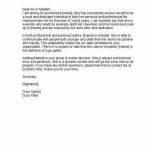Anne Helmenstine, Ph.D. is an author and consultant with a broad scientific and medical background. Read more
Updated October 03, 2016.
Have you ever wondered whether it’;s safe to write on yourself with a Sharpie marker or use a Sharpie to make fake tattoos? Would it surprise you to learn some tattoo artists work out a design using Sharpies before inking it?
Sharpie and Your Skin
According to Sharpie’;s blog. markers that bear the ACMI "non-toxic" seal have been tested and deemed safe for art, even by children, but this does not include body art, such as drawing eyeliner, filling in tattoos or making temporary tattoos.
Continue Reading Below
The company does not recommend using the markers on skin. In order to bear the ACMI seal a product must undergo toxicological testing for the Arts and Creative Materials Institute. The testing is concerned with inhalation and ingestion of the materials and not absorption into the bloodstream, which could occur if chemicals in the marker permeate the skin or enter the body through broken skin.
Sharpie Ingredients
Sharpie pens may contain n-propanol, n-butanol, diacetone alcohol and cresol. Although n-propanol is considered safe enough to be used in cosmetics, the other solvents may cause reactions or other health effects .
Three types of Sharpie markers contain xylene (see MSDS ), a chemical capable of causing nervous system and organ damage. Only the King Size Sharpie, Magnum Sharpie and Touch-Up Sharpie contain this chemical.
Some tattooist use Sharpies to draw designs on the skin, but at least one professional warns against using the red markers because the ink sometimes causes problems with the healed tattoos, sometimes long after the tattoo has been inked.
Removing a Sharpie Tattoo
For the most part, it’;s the solvents in the ink of a Sharpie pen that present a health concern more than the pigments, so once you’;ve drawn on yourself and the ink has dried, there is not a lot more risk from the product.
Continue Reading Below
It appears reactions to the pigments are uncommon. The pigment only penetrates the top layers of skin, so the ink will wear off within a few days. If you wish to remove the Sharpie ink rather than let it wear off, you can apply mineral oil (e.g. baby oil) to loosen the pigment molecules. Most of the color will wash away with soap and water once the oil has been applied.
Rubbing alcohol (isopropyl alcohol) will remove Sharpie ink. However, alcohols penetrate skin and may carry undesirable chemicals into the bloodstream. A better choice is grain alcohol (ethanol), such as you might find in hand sanitizer gel. Although ethanol also penetrates intact skin, at least the type of alcohol isn’;t particularly toxic. Completely avoid using toxic solvents, such as methanol, acetone, benzene, or toluene. They will remove the pigment, but they present a health risk and safer options are readily available.
Additional Resources





 Writing a character letter for yourself
Writing a character letter for yourself What does your writing say about you
What does your writing say about you Communicating with your angels through automatic writing and channeling
Communicating with your angels through automatic writing and channeling Writing a good hypothesis worksheet pdf
Writing a good hypothesis worksheet pdf Your food is fooling you summary writing
Your food is fooling you summary writing






